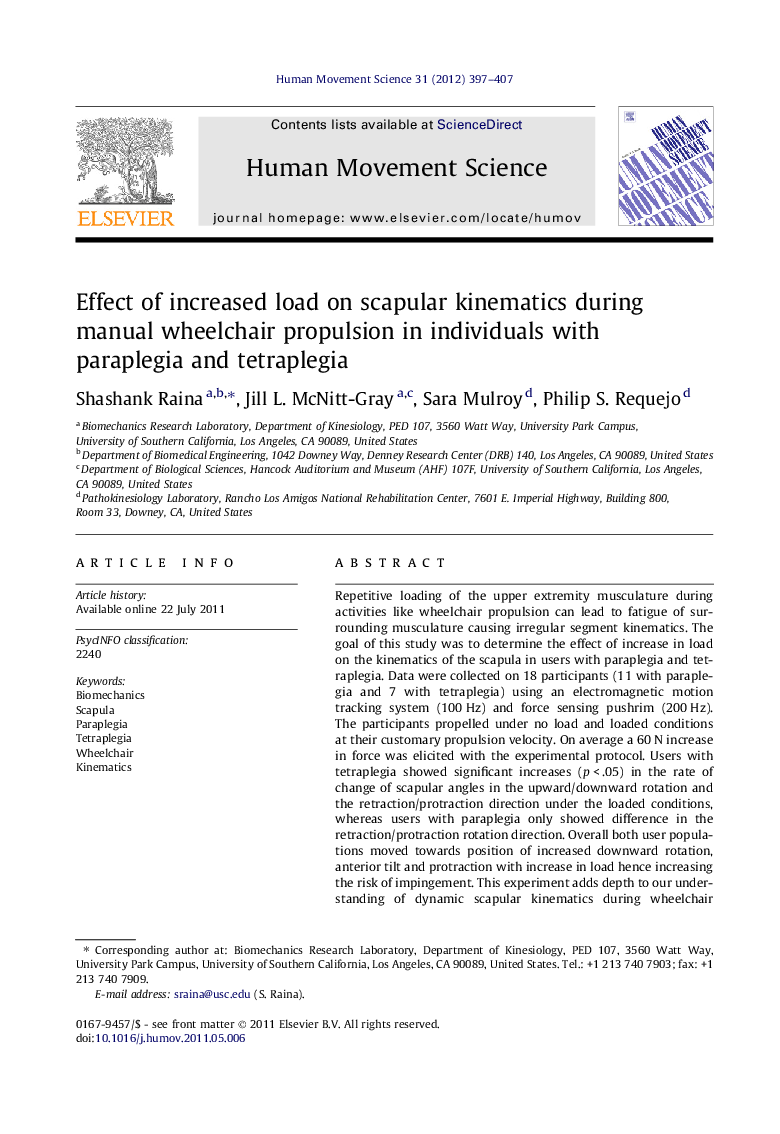| Article ID | Journal | Published Year | Pages | File Type |
|---|---|---|---|---|
| 928539 | Human Movement Science | 2012 | 11 Pages |
Repetitive loading of the upper extremity musculature during activities like wheelchair propulsion can lead to fatigue of surrounding musculature causing irregular segment kinematics. The goal of this study was to determine the effect of increase in load on the kinematics of the scapula in users with paraplegia and tetraplegia. Data were collected on 18 participants (11 with paraplegia and 7 with tetraplegia) using an electromagnetic motion tracking system (100 Hz) and force sensing pushrim (200 Hz). The participants propelled under no load and loaded conditions at their customary propulsion velocity. On average a 60 N increase in force was elicited with the experimental protocol. Users with tetraplegia showed significant increases (p < .05) in the rate of change of scapular angles in the upward/downward rotation and the retraction/protraction direction under the loaded conditions, whereas users with paraplegia only showed difference in the retraction/protraction rotation direction. Overall both user populations moved towards position of increased downward rotation, anterior tilt and protraction with increase in load hence increasing the risk of impingement. This experiment adds depth to our understanding of dynamic scapular kinematics during wheelchair propulsion under different loading conditions and differences in scapular control between users with paraplegia and tetraplegia.
► We examine the scapular kinematics during wheelchair propulsion. ► We measure the effect of load change with electromagnetic tracking and force sensing systems. ► Increasing load increased downward rotation, anterior tilt and protraction. ► Increasing load increased rate of scapular angles in tetraplegia than in paraplegia ► Dynamic scapular kinematics can be an indicator for shoulder impingement risks.
